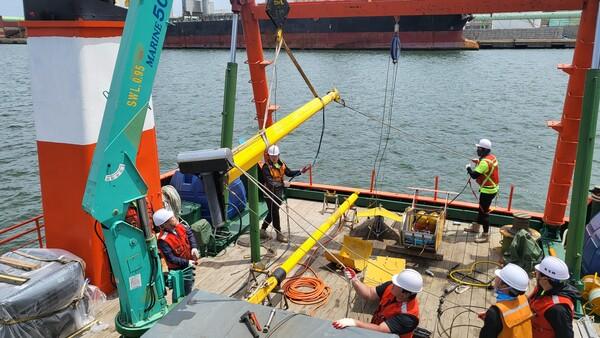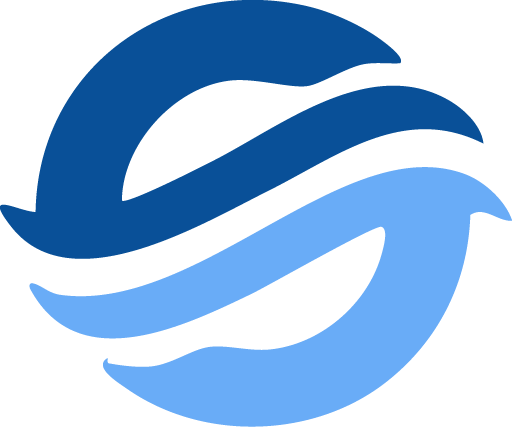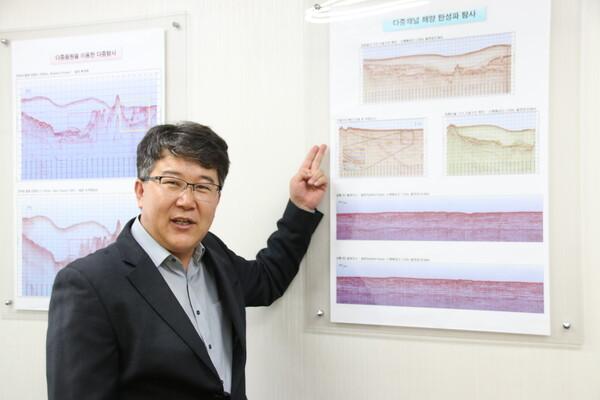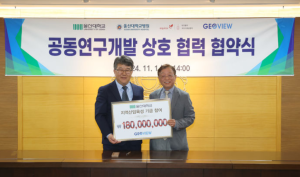By Yang Jin-young, Electric Times (camp@electimes.com) Published on May 26, 2022, at 11:01 AM
- Securing the Mapping Project for Equinor’s Floating Wind Power… Meeting Global Standards
- Showcasing 96-Channel Technology in an Industry Dominated by Single-Channel Systems
The common factor between the Third Interconnection Line linking Jeju and Wando and Ulsan’s floating offshore wind power project is that both are highly anticipated by the renewable energy industry. The Third Interconnection Line is considered one of the solutions to mitigate power output restrictions from wind and solar energy. Meanwhile, floating offshore wind power, which installs turbines in deeper waters with stronger winds, can generate more electricity compared to nearshore installations.
Another shared aspect of these two projects is the need for marine exploration. The Third Interconnection Line requires undersea cable installation, while floating offshore wind power involves securing turbines to the seabed with mooring lines, making underwater conditions a critical factor in both projects.
Geoview, a leading marine exploration company based in Busan and led by CEO Kim Hyun-do, is responsible for conducting the marine surveys for both projects.
Founded in 2005 after CEO Kim earned his Ph.D. in Ocean Engineering, Geoview emerged at a time when South Korea had the term “marine exploration” but lacked specialized exploration companies. Since then, under the company motto “Technology First,” Geoview has focused on technological excellence, achieving 18 patent registrations and 11 technology transfers. These include a small cone penetration system for seabed sediment analysis in offshore plant installations, an acoustic 3D scanner operation system for high-precision seabed surveys, and a 3D seismic wave receiver array technology using deflectors.
Last year, the company was recognized for its technological services with the “One Million Dollar Export Tower” award. Most recently, it secured a contract with Norwegian energy giant Equinor to conduct seabed geophysical surveys and mapping for the Firefly Floating Offshore Wind Project in Ulsan.

The project aims to develop an 800MW floating offshore wind farm approximately 70 kilometers off the coast of Ulsan.
Equinor established the world’s first floating offshore wind demonstration project in Norway (2.3MW) in 2009 and developed and operates the world’s first commercial floating offshore wind farm, Hywind Scotland (30MW), in 2017.
The fact that Equinor, with its world-class expertise in floating offshore wind, entrusted the subsea survey to Geoview, a domestic company, is clear evidence of Geoview’s globally recognized technological capabilities.
CEO Kim stated, “We already had strong technical expertise, but this Equinor project provided an opportunity to align with global standards, including HSE (Health, Safety, and Environment). As a result, we have now met the standards required by not only domestic but also international wind power companies. This has led to increasing inquiries from other overseas offshore wind companies planning to enter the Korean market.”
Unlike domestic competitors that use single-channel systems, Geoview conducts surveys with multi-channel technology.
Using an analogy of a bat’s echolocation, instead of relying on a single ultrasonic wave, Geoview’s technology reflects and analyzes multiple waves. This multi-channel approach enables high-resolution imaging, and recently, Geoview has acquired a 96-channel subsurface survey system, strengthening its competitiveness against advanced European technologies. Additionally, Geoview is the first company in Korea to own a 121-ton specialized marine survey vessel.
CEO Kim remarked, “I have a strong passion for equipment, so we prioritized investment in various technologies. Many marine survey companies hesitate to invest in equipment and technology due to a lack of immediate projects, but without investment, they remain stagnant.”

CEO Kim believes that as the energy industry in the sea, including subsea cables and offshore wind power, continues to grow, the importance of marine surveys will also increase. He explained, “Initially, marine surveys are needed to identify suitable locations, and after completion, surveys are required to ensure the construction has been carried out properly. Marine surveys are the beginning and the end of any project at sea.”
CEO Kim expressed regret over the significant gap between domestic marine survey standards and international standards. He said, “Countries like Europe, which are leaders in marine surveys, perform tasks globally based on their high-level technology and experience, but domestic companies are still stuck at the level of basic surveying, which is quite backward. It is shameful for South Korea, a shipbuilding powerhouse.”
He advised that breaking the vicious cycle of price-based competition is necessary to elevate the level of marine surveys in South Korea. He noted, “Most marine surveying companies only produce low-resolution data with single-channel surveys, competing on low prices to win projects. As a result, clients often choose companies offering lower prices, creating a vicious cycle.” He further explained, “As a result, the outcome of the work is inaccurate and has poor resolution, which often leads to more expensive re-surveys. The industry needs to reflect on turning what should be a high-tech, skilled profession into a simple surveying business.”
CEO Kim also shared his final dream after retirement, which is to find the Turtle Ship. To pursue this, he has learned underwater archaeology and cultural exploration techniques. “The highlight I can achieve with the technology and experience accumulated from marine surveys is finding the Turtle Ship,” he said. “As a marine survey company, I have a mission to do this and revive Admiral Yi Sun-sin in South Korea.”



